The Main soviet WW2 seaplane
The MBR-2 (Medium Reconnaissance Seaplane, Type II) is a Soviet flying boat developed at the Central Design Bureau of MS under the leadership of G. M. Beriev, the most plentiful of all types during WW2. It Actively used as a patrol, transport, reconnaissance, and rescue seaplane, but also as bomber and antisubmarine patroller. It was nicknameed “barn” or “cow” given its construction, being a modern looking but all-wooden design, quite performing for its time (1932), but far less in 1941. This really was the model that launched the career of Georgian-born G.H. Beriev and put his name in the world’s map for seaplanes. #ww2 #sovietnavy #Voyennomorskoyflot #seaplane #beriev
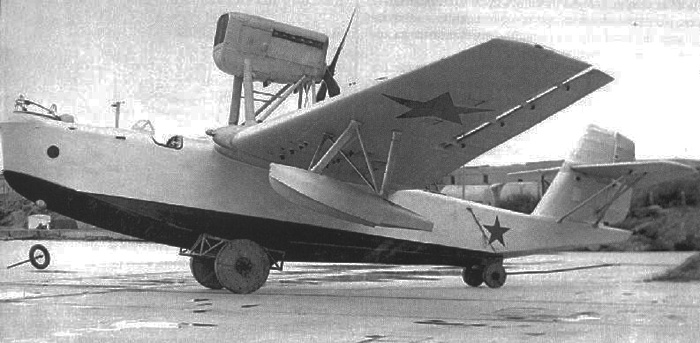
Prototype in 1933 at Sebastopol
Design development of the KOR-2
The MBR-2 is in fact the first serial model created by G. M. Beriev, the great name of seaplanes in USSR for many decades. At that time there was a great need for modern seaplanes, including coastal reconnaissance aircraft. Initially, according to the initial project requirement, the new models wanted was to be all-metal, but scarce aluminum stocks at the time (used exclusively for heavy bombers) forced Beriev to look at other material. Steel was also in high demand by the Army, and was too heavy anyway, plastic was in its infancy, so he turned instead to wood, a seemingly backwards solution, but it used more wood than canvas for rigidity and used at best various wood essences to get the best of rigidity and flexibility. In this regard, his model looked promising while not taxing strategic meterials, and it was decided to approve it. The technical council recommended its testing and production right away.
Special Bio: Georgy Mikhailovich Beriev
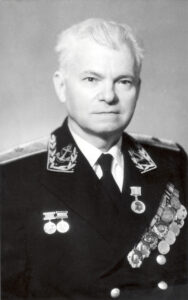 Georgy Mikhailovich Beriev (Beriashvili) was a Georgian born in February1903 (+July 12 1979) major general, founder, chief designer of the Beriev Design Bureau in Taganrog. After graduating from the railway school in Tbilisi (1923) School of Shipbuilding Engineering at the Leningrad Polytechnic Institute (1930) he worked as an aircraft designer at the Central Design Office “WR Menzhinsky” and developed the Beriev MBR-2 seaplane, out subject. From this success between October 1934 to 1968 he ran the Central Design Office for marine aircraft in Taganrog, the father of amazing amphibious aircraft designs. He was awarded the Stalin Prize for the Be-6 and (twice) the Order of Lenin, (twice) the Order of the Red Banner of Labour whereas his Be-12 (1968) design was awarded the USSR State Prize.
Georgy Mikhailovich Beriev (Beriashvili) was a Georgian born in February1903 (+July 12 1979) major general, founder, chief designer of the Beriev Design Bureau in Taganrog. After graduating from the railway school in Tbilisi (1923) School of Shipbuilding Engineering at the Leningrad Polytechnic Institute (1930) he worked as an aircraft designer at the Central Design Office “WR Menzhinsky” and developed the Beriev MBR-2 seaplane, out subject. From this success between October 1934 to 1968 he ran the Central Design Office for marine aircraft in Taganrog, the father of amazing amphibious aircraft designs. He was awarded the Stalin Prize for the Be-6 and (twice) the Order of Lenin, (twice) the Order of the Red Banner of Labour whereas his Be-12 (1968) design was awarded the USSR State Prize.
Note: No CC Photo from the man. This one if an official photo from cosmos-online.ru
Design Process
The history of the MBR-2 started when R.L.Bartini met opposition to his latest project with Party Burocracy. His all-metal project MBR-1 was transferred to redesign to the young designer G.M.Beriev. D.P.Grigorovich, a great name for flying boats in WW1, failed to met success with the new regime. Thus, the Soviet Navy possessed only a limited amount of outdated airplanes and were convinced by Beriev which was more realistically thinking that aluminum alloy shortages in the USSR and available resources given to A.N.Tupolev proposed a radically revised ‘Aircraft 25’ (or TsKB-25) and all wooden but still with the same layout and size of Bartini’s MBR-1. It was in perfect compliance with early 30’s concept to built more and better but cheaper. It soon gained support of D.P.Grigorovich, N.N.Polikarpov and even I.V.Chetverikov, a competitor of G.M.Beriev for Naval aviation.
However it encountered a serious blow when the originally planned M-27 engine failed to pass acceptance trials. Project cancellation was even advanced, but the situation was saved by its layout allowing easy change of powerplant as well as Berviev’s calls to high rank officers. The less powerful but well-tested and reliable 500hp M-17 (BMW-VI) was quickly adopted allowing a first test by December 1931 aircraft, the prototype being carried in the Spring 1932 to Sevastopol for trials.
What became the MBR-2 started in 1931 as the TsKB-25. The first experimental model was built in Moscow’s plant No. 39. The prototype first took to the skies on May 3, 1932.
Tests showed it had good flight performance, in fact far exceeding contemporary foreign designs purchased for comparative tests and technology studies.
Tests of the prototype were carried out by the future Beriev test pilot, brigade commander A. A. Ulsen. Later by test-pilot B.L.Bukhgolts and flight mechanic V.A.Dneprov. On August 5, 1933 Stalin held a meeting at which the issue of naval aviation was raised.
Due to A. N. Tupolev promotion of his MDR-2 seaplane, decision to adopt the MBR-2 was postponed. Beriev was offered as alternative, to convert his model into a passenger version for the Aeroflot, hoping that it would be easier to introduce it to futher military orders in the future. But in the first half of 1933, attitude towards seaplanes in USRR changed, and by August 1933 the MBR-2 was recalled for service and mass production.
Production & Variants
Production Records
Serial production of the MBR-2 started at plant number 31 in Taganrog, which provided the first pre-serie machines from July 1934. The peak of aircraft production fell however by 1937 and 1938. Production ceased in mid-1940 but at that time, a grand total of 1,365 MBR-2s had been manufactured, including the passenger variant MP-1s. Thus, this flying boat became the most available Soviet-made seaplane in WW2. It’s succession was to be the also Beriev-designed BE-4 (KOR-2) in 1940 which was a smaller catapulted model, all metal.
Production of MBR-2 according to factoru records were 1934(193), 1935(95) 1936(109) 1937(360) 1938(364) 1939(192) 1940(38) for 1,361 Total at N°31 Taganrog plant but also 14 transport versions at No.45 plant in Sevastopol in 1934-35. They were requisitioned during WW2 as military transports for the Black Sea Fleet (see later).
Variants
MBR-2-M-17: M-17b engine, first serial Production model at Taganrog, 1/3 of the production (roughly 450).
MBR-2VU-M-17:A radio-control aircraft to drive exploding radio-controlled boats (Sprut system) and from 1938 Volt-R. Crew The radio operators were located behind the cockpit. Since 1937, squadrons were formed and active until the end of the war, but the models were never used for their intended purpose. This was nevertheless an innovative concept for the time.
MP-1 The passenger version (14 built) unarmed and with internal furnishings, with six chairs, a comfortable seaplane painted blue-turquoise for the Yalta-Odessa airline. In WW2 it served as VIP transport for the Black Sea fleet.
MP-1T Semi-military transport seaplane version based on the MBR-2-M-17, disarmed but with extra room for storage. The few built served in the polar aviation for surveys and aerial photography, ice mapping and fishery patrols, and for survey work in Siberia.
MBR-2 M-34 Called MBR-2bis according to Italian standards, it receibed the better 1936 M-34 engine (AM-34 in 1937), without gearbox. It was declined into two sub-versions:
MBR-2 with AM-34NB supercharger or AM-34B one. Its vertical rudder was rounded and narrowed towards the top while the cockpit was fully enclosed. Production started in 1937 and it also received for the first time a permanent Amphibian option with wheeled chassis.
MBR-2VU-M-34 Second variant of radio-controlled boats, but with the new M-34 engine, same story as above.
MP-1bis Second variant of the passenger model with the M-34 engine (1937). It had equipment for aerial photography in a special airtight hatch. Two more were ordered in 1939 to be used by the NKPS. They mapped the area used for Baikal-Amur Train line and still had a cushy cabin with six chairs, lighting, ventilation and soundproofing. They operated over Siberia, Far East, Urals, Far North, but also to the Black Sea coast. They were also requisitioned in WW2.
MBR-2-M-103 Experimentak variant in 1939 with the M-103 engine (metal three-blade variable-pitch propeller). It was also tested for the MBR-7.
MBR-2 bis “Polyarny” Polar aviation tailored model (1934) with insulated cabin, heater, reinforced bottom to land on ice. It operated in the Far North until 1949.
Design Specifics
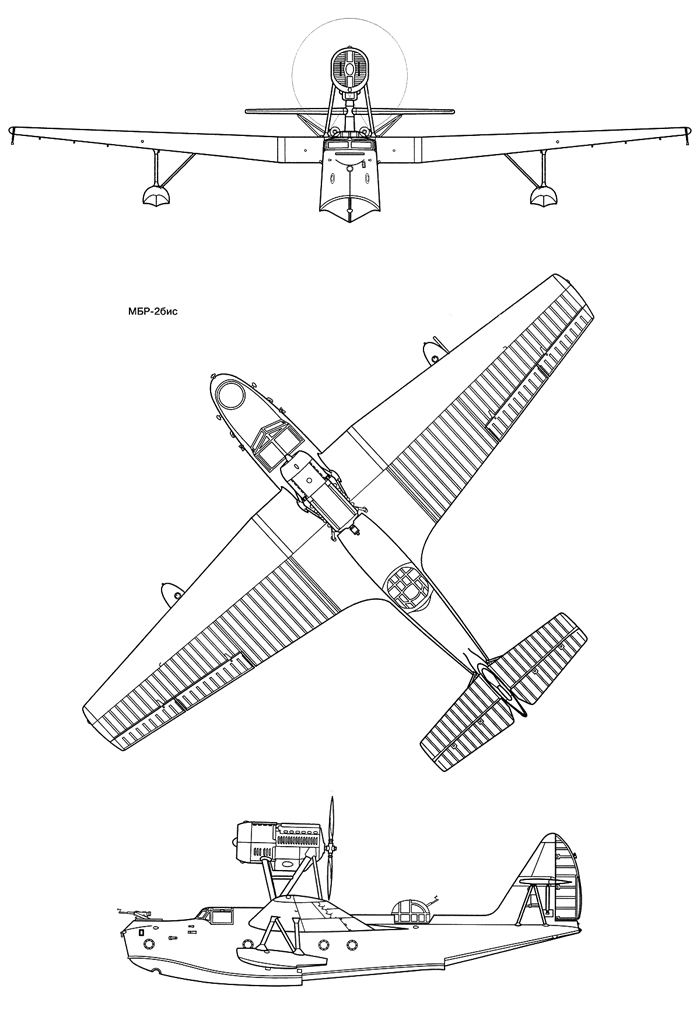
The single-engine wooden cantilever monoplane, top mounted, with two floats and also a strut-mounted top pusher engine to avoid seaspray. The fuselage was caracterized by underbelly reinforcement, and it had good seaworthiness, being able to land and take off in a up to 0.7 m waves. The cabin comparised a crew of three, pilot, navigator/mechanic and air gunner-radio operator. Since the first models were open, they wore warm uniforms and chapkas. The fuselage was a two-way stype with well shaped keel bottom.
Its wood construction mix ash, pine and linden for the structure. The sheathing was made in lighter, flexible birch plywood, on which a coat of canvas was pasted, varnish and painted for protection.
The fuselage was divided into five waterproof compartments, bulkheaded. The first one comprised the navigator’s cabin and in front, the forward MG post, a hatch for a bomb sight and marine equipments in a storage, anchor and ropes. Hooks were installed on the nose as well for towing it. The second compartment comprised the proper cockpit for the pilot, partially closed from above. The third compartment comprised additional gasoline and oil tanks. The fourth one was the central defensive MG post, where was located the second MG-gunner, and motor compressor for starting the engine above. The fifth one, in the tail, was empty. The belly comprised also a double bottom in case of perforation.
The Wings were two-spar type, consisting of a center section and two detachable parts. The center section was made of solid wood for extra rigidity. The frame comprised a structural caisson, consisting of spars, ribs and working skin. Detachable parts of the wing consised of a wooden toe and central section hosting a sealed compartment for additional gasoline, as well as two detachable duralumin rear compartments, one of the rare metallic parts. Lights are installed on the duralumin ends. Two-section ailerons and flaps were installed, and underwing were strut-attached two non-retractable all-wooded floats fixed on consoles.
The Tail consists of a stabilizer, keel and rudders plus balancers. The stabilizer is strut-braced, with variable angle stup in flight. Stabilizer and elevator had a duralumin, not wooden frame, and fabric sheathing still, but covered with dope for extra ruggedness.
The lower part comprised a wooden keel (fuselage) and upper part all-metal glued over the duralumin sheathing, with canvas covered by special varnish. The rudder itsef was all-metal and equipped with a trim tab for extra balance.
The fuselage Chassis comprised a wheel-ski (after the option was available) with a rear crutch. The main landing gear comprised a shock absorber strut, axle shaft and strut attached to brackets on the center section on the sides. For shore management, the seaplane was installed on two carts, one installed under the front step, and a tail one. The landing gear was installed on the ground. In winter, it was swapped by a ski landing gear. Steering wheels and skis were managed from the same control column via cable wiring which also communicated to the stabilizer and rudder. There was a lso a semi-rigid wiring on the elevator and ailerons consisting of steel cables and tubular rods.
Engine & Performances
The power plant variaed over time but only two were retained for production.
The first was the M-17b engine. The Mikulin M-17 was a Soviet-licensed copy of the German BMW VI V-12 liquid-cooled aircraft piston engine. It developed circa 700 bhp. The 17B version was derived from the BMW VIb and had a strengthened crankshaft nose, modified crankshaft end, new valve seats and smaller exhaust valves, plus variable compression ratios. Early production models (around 450) were equipped by it and had also a semi-open cockpit.
The final version (2/3 of the production) were given the modern modern AM-34N liquid-cooled piston engine rated for 750 hp. I both cases, the propeller was two-bladed three-meter diameter in a pusher configuration, with an adjustable variable pitch from the ground. It was strut-mounted above the center section with two “N” arrangements, fully braced. The Fuel was in two main tanks located in the center section, fed by vacuum pump, with a capacity of 670 liters, completed by two additional removable wing tanks, 460 liters each. The engine was started using compressed air from a cylinder (also used by the fuel intake) or from the starting compressor.
As for performances, top speed was 275 km/h (171 mph, 148 kn), not great in 1941, for a range of 1,500 km (930 mi, 810 nmi) and a service ceiling of 4,900 m (16,100 ft). This is for the latter engine fo course. It’s les stellar with the early M17b version.
Armament
It was defensive for part, with two 7.62 mm light Machine guns in “turrets”, manned on a ring and flexible mount. Forward was a 0.30 in PV-1 machine gun and aft a 7.62 mm ShKAS machine (dorsal position) with 1000 rounds per machine gun.
The offensive armament comprised under external suspension racks, bombs for a total not exceeding 500 kg. So this was less than idea against submarines. However one squadron performed a successful bombing mission once (see later).
Specifications MBR-2 |
|
| Crew: | 3: Pilot, Observer-Navigator/Gunner, Radio/gunner, or more. |
| Dimensions: | 13.5 m (44 ft 3 in) x 19 m (62 ft 4 in) x 4.4 m (14 ft 5 in) |
| Wing area: | Unknown, Airfoil root MOS-27 (18%); tip: MOS-27 (10%) |
| Weight: Light | 2,718 kg (5,992 lb) |
| Weight: Gross | 4,245 kg (9,359 lb) |
| Propulsion: | Mikulin AM-34N V-12 559 kW (750 hp) |
| Performances: | Top speed: 275 km/h (171 mph, 148 kn) Service ceiling: 4,900 m (16,100 ft) Range: 1,500 km (930 mi, 810 nmi) |
| Armament – MGs | 2x 7.62 mm machine guns, see notes |
| Armament – Bombs | 500 kg (? lb) of bombs |
Service
Interwar Service
In the late 30s, Beriev’s MBR-2 became the main frontline seaplanes of Soviet naval aviation and were soon judged durable, reliable, easy to pilot and with good seaworthiness. The simple wooden structure also allowed the maintance team to easily access or repair it. However, the coating required special care during maintenance and repairs as well, but also at each use.
After each flight it required full drying indeed by technicians to remove saltwater. When not available, a simple fire made in a sandbeach and bags wrapped around the aircraft body were used. When available, electric lamps, hot compressed air or hot water cans were also used, and the process went for several hours. This was a major drawback, never fully adressed.
Deliveries of the MBR-2 to combat units of the Black Sea and Baltic Fleets started from mid-1934, and by 1935, the Pacific Fleet as well. In 1937, the new models entered also the Northern Fleet. In 1939, even the NKVD border troops received their own, mostly the special variants seen above.
In 1938, MBR-2 in the Pacific Fleet took part in missions against the agressive stance of the IJA near Lake Khasan. They conducted reconnaissance in the Sea of Japan, in the area of Vladivostok and Posyet but never met the IJN or IJA aviation.
The Soviet-Finnish war, saw the Baltic Fleet deploying its 124 MBR-2s, mostly the early type. The 118th separate reconnaissance aviation regiment, Northern Fleet was also moved there to take part in operations. They conducted reconnaissance above the Gulf of Finland, northern Baltic and targeted Finnish shipping lanes, bombing sea and ground targets as well as performing for search and rescue operations. Most MBR-2s were equipped with skis in the first winter of operations, from land airfields. Combat losses of the Baltic Fleet were of 12 MBR-2s. 14 of the northern fleet but burned down in hangar due to mechanics negligence.
One of these also held a record: In 1938, commander senior lieutenant Polina Osipenko, senior lieutenant Vera Lomako and navigator-radio operator lieutenant Marina Raskova on an MP-1 made a record non-stop flight between Sevastopol, Kiev, Novgorod and Arkhangelsk, 2,416 km total. It came from the Odessa-Batumi airline and made an emergency landing in the Black Sea during a storm.
Beriev MBR-2 in WW2
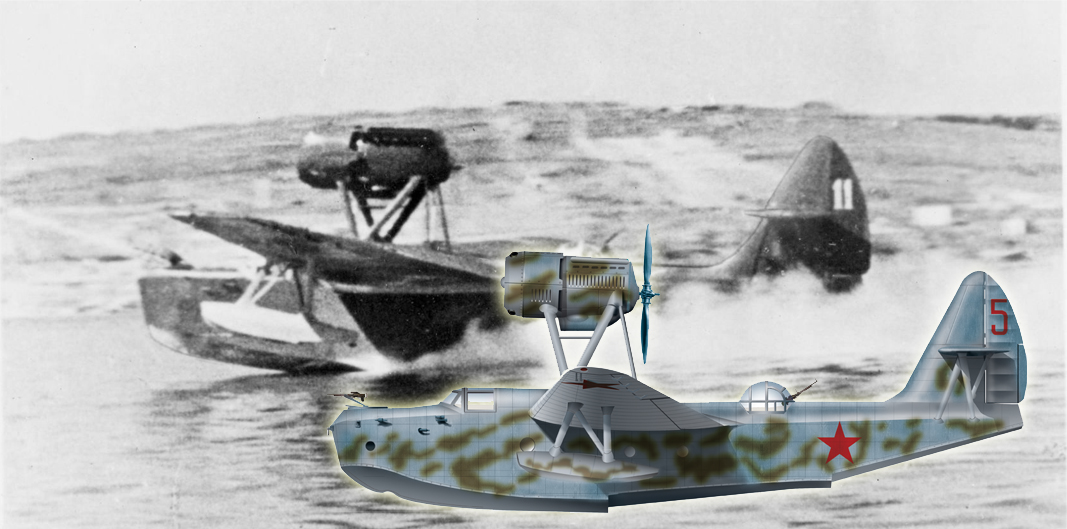
In this summer of 1941, the Northern Fleet aligned 49 MBR-2s (118th separate reconnaissance regiment, 49th separate squadron). In the Baltic were 151 MBR-2s (15th Naval Reconnaissance Regiment, six separate squadrons). There were also 139 MBR-2s for the Black Sea (119th MRAP, five separate squadrons, 7th squadron NKVD near Odessa) and 218 for Pacific Fleet which was the better equipped, unfortunatly they played almost no role until the invasion of August 1945.
Northern Fleet Combat action: MBR-2s used for bombing, ASW patrols, convoy escort and ice reconnaissance also supported ground units in the early days. However the Luftwaffe was quite active over the Baltic and MBR-2s registered so many losses they were ultimately turned into night bombers. By September 1941 after loosing 2/3 of its park, remaining MBR-2 performed night attacks on enemy airfields, performing 678 sorties. From January to March 1942, the MBR-2 they also supplied Marine Troops on the isolated islands of Gogland and Bolshoy Tyuters. From 1944, they were retired or replaced.
Black Sea Combat Action: Initially, MBR-2s were used for minelaying and ground troops support, aslo preying on the navigation in the Danube Delta. For the black sea fleet, they provided oversea reconnaissance and fire adjustments. During the defense of Sevastopol, an air group was formed with the 16th and 64th separate groups (26 MBR-2s) in Matyushenko and Holland bays. They bombed advanced German and axis positions, railway line (at night) and the airfields of Saki and Sarabuz. By July 1942, half had been shot down. By late 1942, MBR-2 crews were performing mostly ASW patrols and escorts over a 40-mile coastal zone.
There was a single attempt to use the radio-controlled MBR-2VU on July 22, 1943, when one conducted a TKA-61 boat into the port of Anapa but it spontaneously exploded well short of the intended target. Another mission with TKA-41 in Kamysh-Burun ended the same way on December 16, this time 1.5 miles from the target. This pretty much cancelled the program and all remaining MBR-2VU were used like other models after reconversions.
Between late 1943 and late 1944, MBR-2s of the Black Sea Fleet were mostly used for search and rescue operations (SAR) between crews of sunken ships and aircraft, also spotting and pointing rescuers at them. Those in the Caspian flotilla bombed the regional committee of the All-Union Communist Party of Bolsheviks of the Kalmyk which then housed the German division HQ in the sold bombardment mission of the type.
The Pacific Fleet had many of its planes written off, transferred to the other fleet to the west and by August 1945 only had 146 MBR-2s (48th, 115th Naval Recce Regt. and several separate squadrons and notanly no less than seven radio-control squadrons, plus the ten NKVD MBR-2s of the Kamchatka. The Japanese campaign saw these MBR-2 used for bombing, reconnaissance, and transportation for Marine Corps.
The North Korean MBR-2:
Five were captured by the Finns which served in Lelv 15, Lelv 6 and Lelv 12 until November 1942. In addition to traditional roles, they were used for scattering leaflets in the Ladoga region.
These were officially transferred to Korea in 1946 and by 1950-1951, were used by the latter night bombers over South Korean and US troop positions…
In the USSR, 1946 saw the retirerement of existing planes, apart a few specialize models, like the polar version. The Pacific Fleet flew held its own until 1950.
Books
Taylor, Michael J. H. (1989). Jane’s Encyclopedia of Aviation. London: Studio Editions. p. 153.
World Aircraft Information Files. London: Bright Star Publishing. pp. File 890 Sheet 26.
Знаменательные даты октября в истории авиации // Авиация и космонавтика. — М., 2015. — № 10. — С. 13.
Шавров В.Б История конструкции самолётов в СССР 1938—1950 г.г.
Заблотский А., Сальников А. Корабельный разведчик для «большого морского и океанского флота». Киев: АэроХобби, 2005.С. 4—12.
Шавров В. Б. История конструкции самолётов в СССР. 1938-1950. — 4-е изд.. — М.: Машиностроение, 2002. — 554 с.
Links
century-of-flight.freeola.com
airpages.ru
On en.topwar.ru
wikipedia ru
airwar.ru
(archive.org) ctrl-c.liu.se/misc/RAM/mbr-2.html
on en.wikipedia.org
on century-of-flight.freeola.com/
The model corner
General Query on Scalemates
The subject has been well covered, unsurprisingly by kit manufacturers in Russia from the 1950s to the 1980s, generally at 1:72 scale.
Gallery
Author’s illustrations
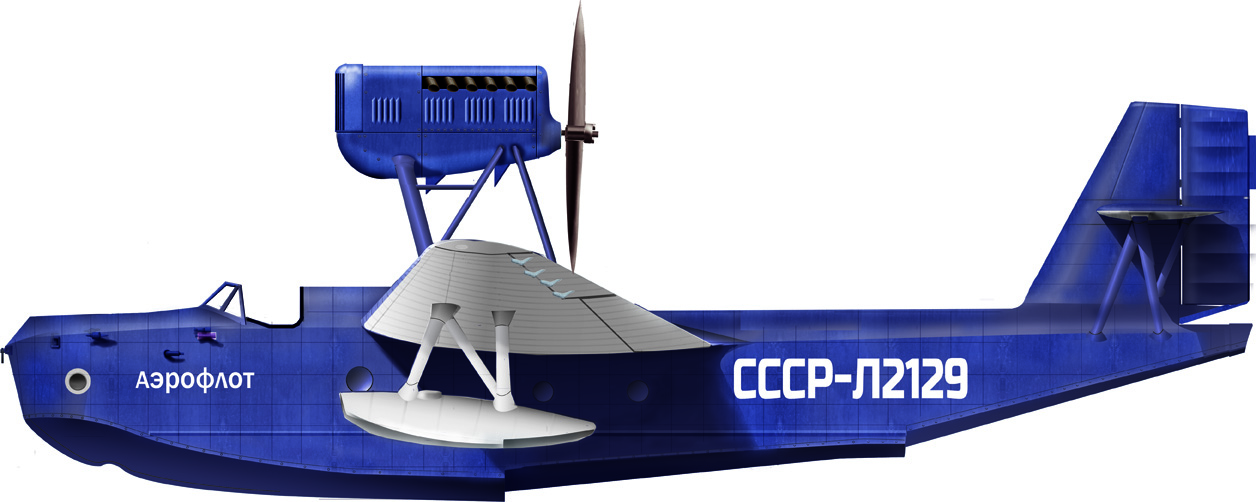 MP-1 in 1930
MP-1 in 1930
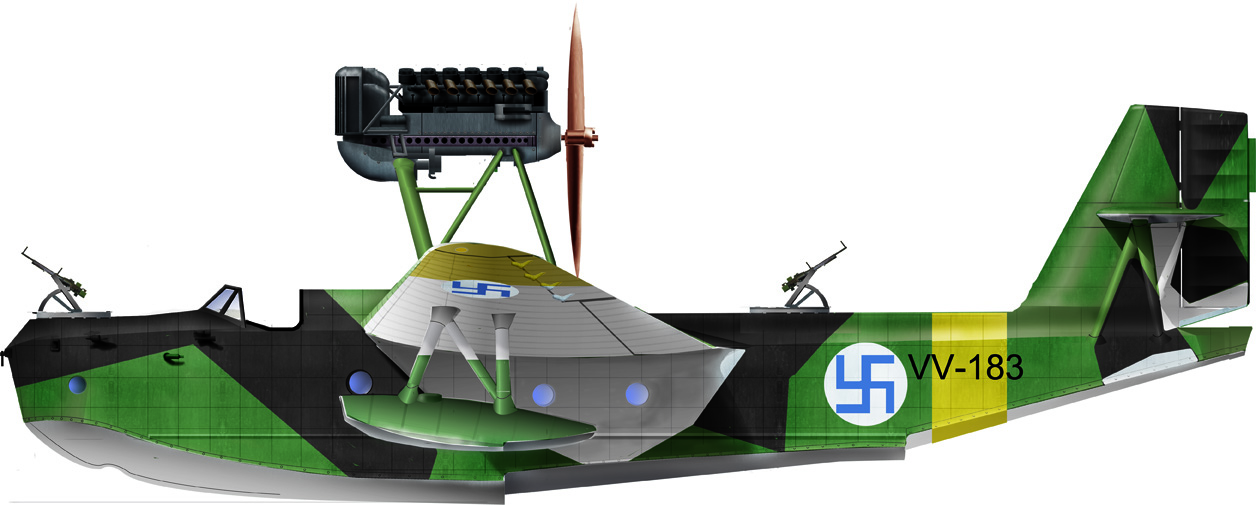 Finnish Early Type (M17) LelV 6F in Vaasa summer 1942
Finnish Early Type (M17) LelV 6F in Vaasa summer 1942
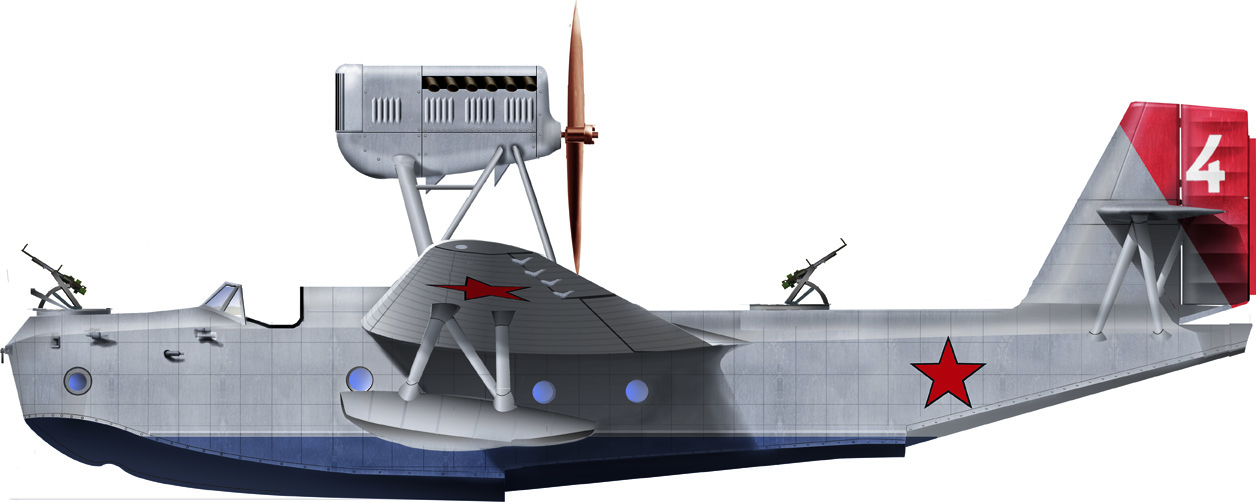 MBR-2 in the Baltic fleet
MBR-2 in the Baltic fleet
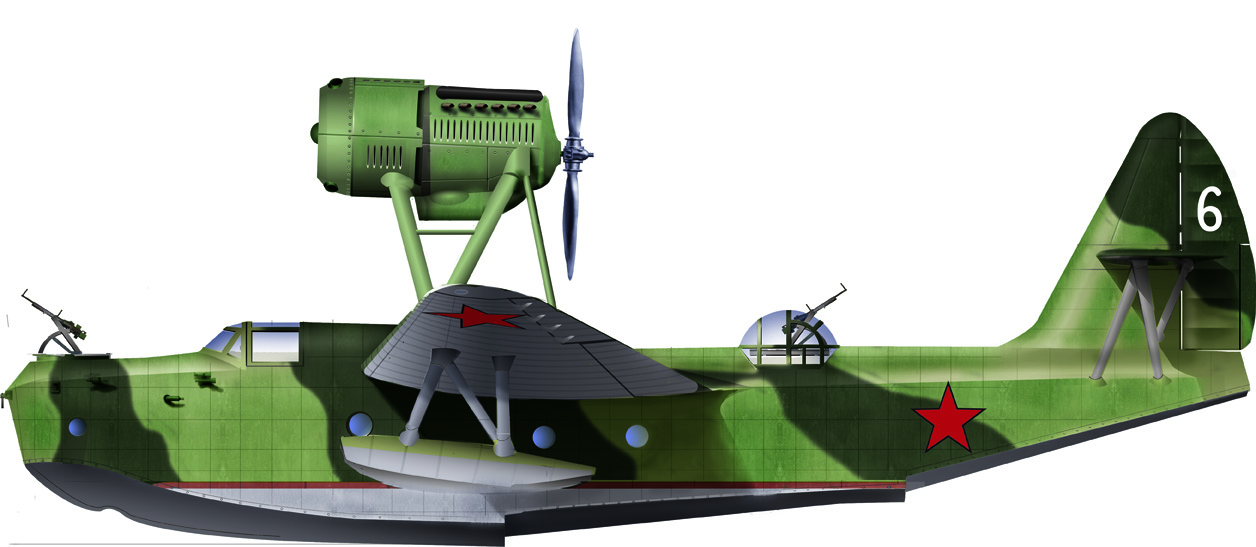 MBR-2 bis in green camouflage
MBR-2 bis in green camouflage
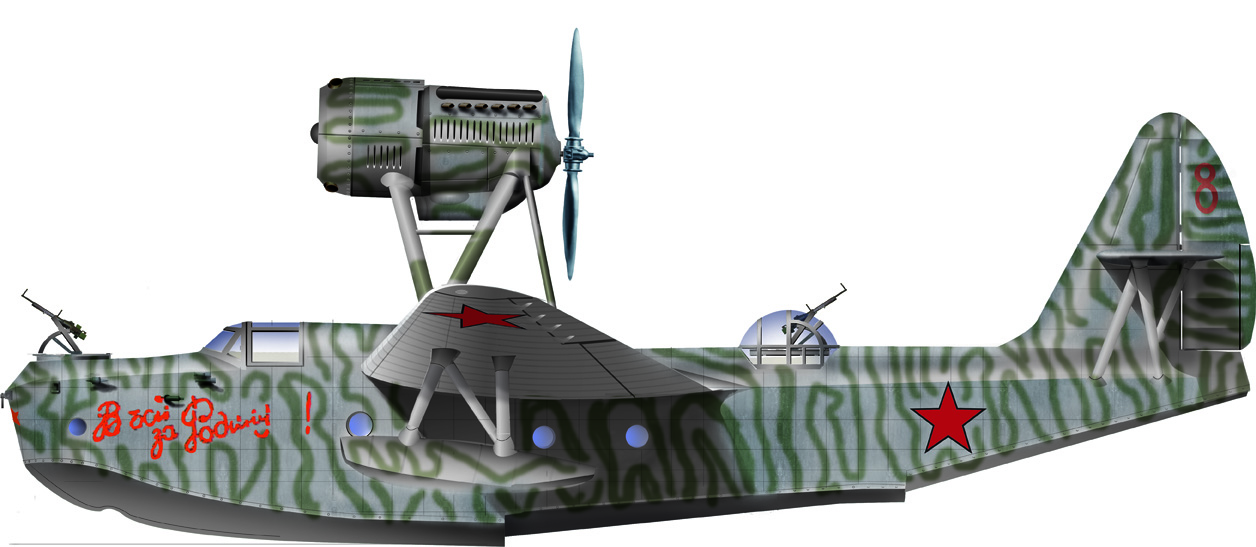 MBR-2 bis with slogan, 188th Indep. Rgt., 72nd Air Mixed Rgt.
MBR-2 bis with slogan, 188th Indep. Rgt., 72nd Air Mixed Rgt.
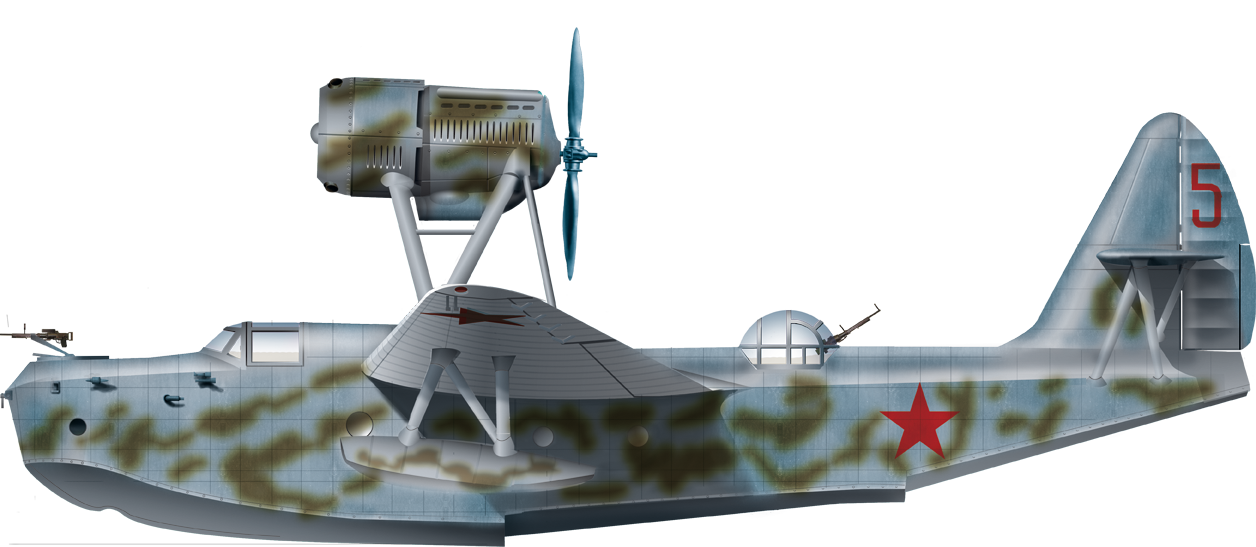 Beriev MBR-2bis, unknown unit, same sprayed vermicel type camouflage over light gray.
Beriev MBR-2bis, unknown unit, same sprayed vermicel type camouflage over light gray.
Additional photos
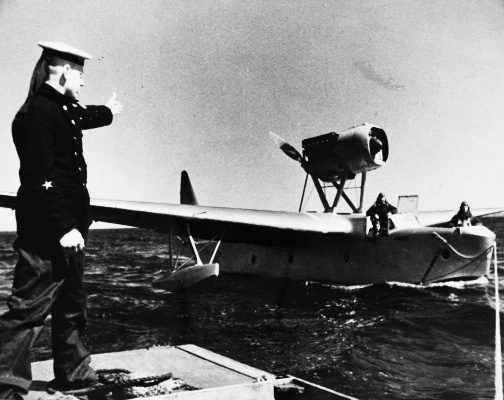
MVR-2, early type
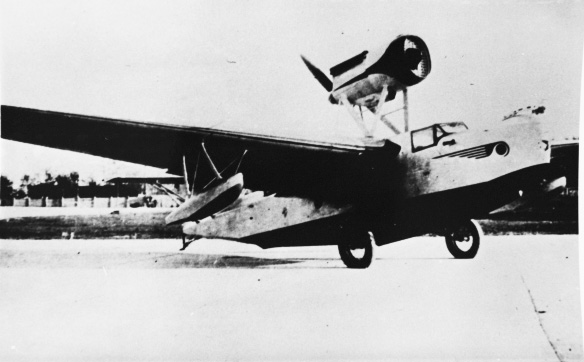
BMR-2 of the Aeroflot
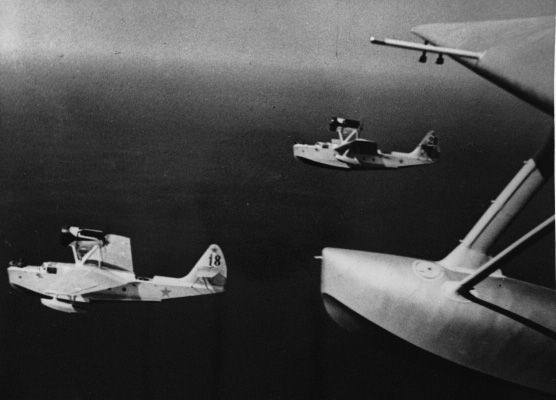
MBR-2s late type in formation
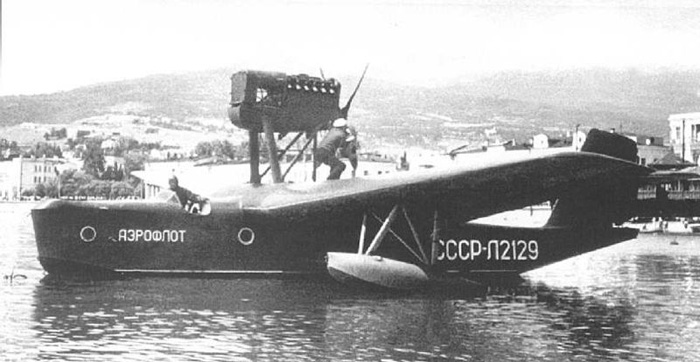
MP-1 VUP transport at Yalta 1938
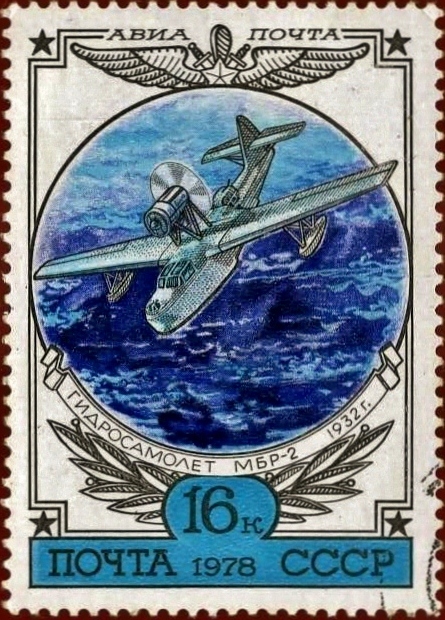
Soviet Union stamp commemorating the MBR-2
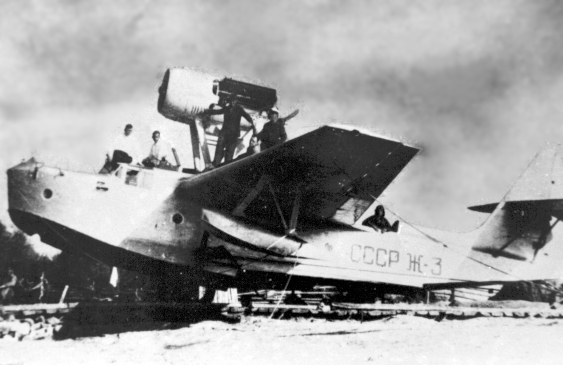
MP-2 of the Aeroflot
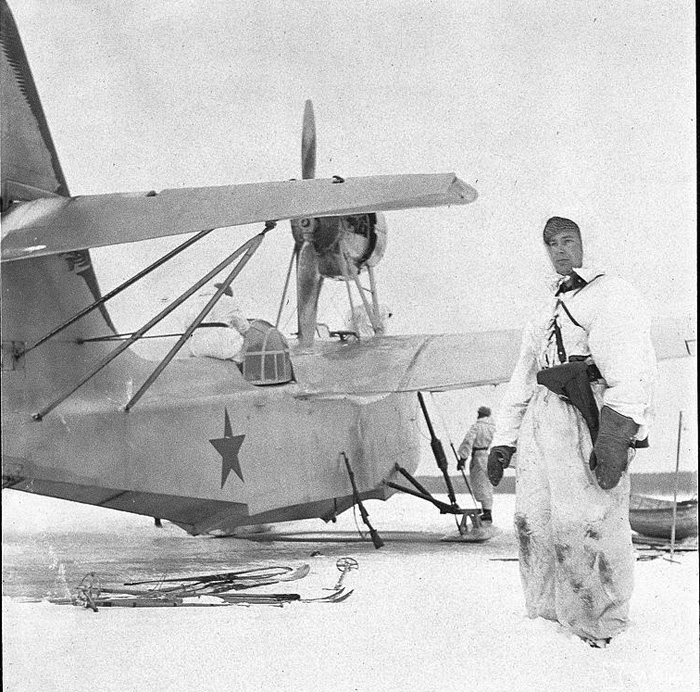
MBT-2 with skis, winter 1939-40 at Kuva
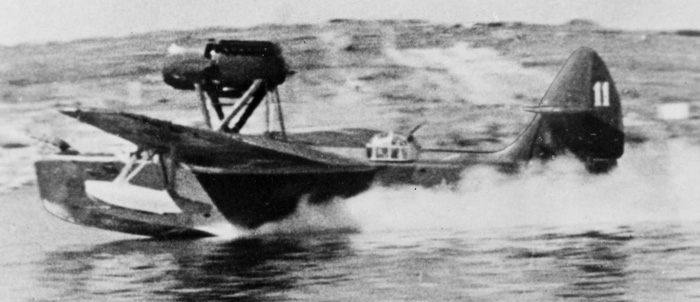
Late type taking off
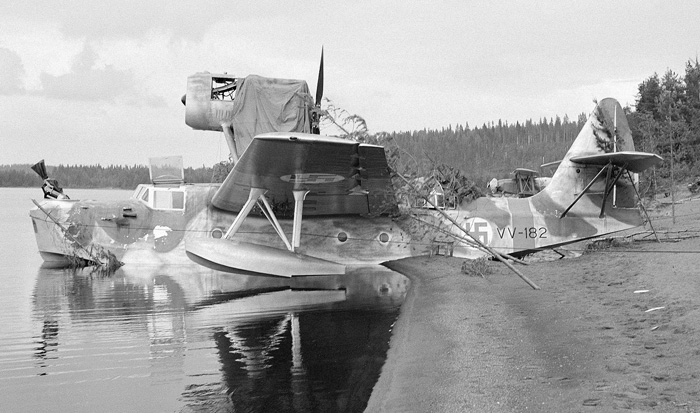


 Latest Facebook Entry -
Latest Facebook Entry -  X(Tweeter) Naval Encyclopedia's deck archive
X(Tweeter) Naval Encyclopedia's deck archive Instagram (@navalencyc)
Instagram (@navalencyc)





 French Navy
French Navy Royal Navy
Royal Navy Russian Navy
Russian Navy Armada Espanola
Armada Espanola Austrian Navy
Austrian Navy K.u.K. Kriegsmarine
K.u.K. Kriegsmarine Dansk Marine
Dansk Marine Nautiko Hellenon
Nautiko Hellenon Koninklije Marine 1870
Koninklije Marine 1870 Marinha do Brasil
Marinha do Brasil Osmanlı Donanması
Osmanlı Donanması Marina Do Peru
Marina Do Peru Marinha do Portugal
Marinha do Portugal Regia Marina 1870
Regia Marina 1870 Nihhon Kaigun 1870
Nihhon Kaigun 1870 Preußische Marine 1870
Preußische Marine 1870 Russkiy Flot 1870
Russkiy Flot 1870 Svenska marinen
Svenska marinen Søværnet
Søværnet Union Navy
Union Navy Confederate Navy
Confederate Navy Armada de Argentina
Armada de Argentina Imperial Chinese Navy
Imperial Chinese Navy Marinha do Portugal
Marinha do Portugal Mexico
Mexico Kaiserliche Marine
Kaiserliche Marine 1898 US Navy
1898 US Navy Sovietskiy Flot
Sovietskiy Flot Royal Canadian Navy
Royal Canadian Navy Royal Australian Navy
Royal Australian Navy RNZN Fleet
RNZN Fleet Chinese Navy 1937
Chinese Navy 1937 Kriegsmarine
Kriegsmarine Chilean Navy
Chilean Navy Danish Navy
Danish Navy Finnish Navy
Finnish Navy Hellenic Navy
Hellenic Navy Polish Navy
Polish Navy Romanian Navy
Romanian Navy Turkish Navy
Turkish Navy Royal Yugoslav Navy
Royal Yugoslav Navy Royal Thai Navy
Royal Thai Navy Minor Navies
Minor Navies Albania
Albania Austria
Austria Belgium
Belgium Columbia
Columbia Costa Rica
Costa Rica Cuba
Cuba Czechoslovakia
Czechoslovakia Dominican Republic
Dominican Republic Haiti
Haiti Hungary
Hungary Honduras
Honduras Estonia
Estonia Iceland
Iceland Eire
Eire Equador
Equador Iran
Iran Iraq
Iraq Latvia
Latvia Liberia
Liberia Lithuania
Lithuania Mandchukuo
Mandchukuo Morocco
Morocco Nicaragua
Nicaragua Persia
Persia San Salvador
San Salvador Sarawak
Sarawak Uruguay
Uruguay Venezuela
Venezuela Zanzibar
Zanzibar Warsaw Pact Navies
Warsaw Pact Navies Bulgaria
Bulgaria Hungary
Hungary

 Bundesmarine
Bundesmarine Dutch Navy
Dutch Navy Hellenic Navy
Hellenic Navy Marina Militare
Marina Militare Yugoslav Navy
Yugoslav Navy Chinese Navy
Chinese Navy Indian Navy
Indian Navy Indonesian Navy
Indonesian Navy JMSDF
JMSDF North Korean Navy
North Korean Navy Pakistani Navy
Pakistani Navy Philippines Navy
Philippines Navy ROKN
ROKN Rep. of Singapore Navy
Rep. of Singapore Navy Taiwanese Navy
Taiwanese Navy IDF Navy
IDF Navy Saudi Navy
Saudi Navy Royal New Zealand Navy
Royal New Zealand Navy Egyptian Navy
Egyptian Navy South African Navy
South African Navy






























 Ukrainian Navy
Ukrainian Navy dbodesign
dbodesign